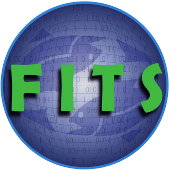The BioBase team sat down with Dr. Chris Harrod for a look into how he uses BioBase. Chris (from the UK) is a full professor of Fish and Aquatic Ecology at the University of Antofagasta in Antofagasta, Chile. He does a mixture of research, teaching, and administration tasks but our interest with him was the applied research techniques for which he was using BioBase. His research is focused on a macroalgae called kelp (aka seaweed) and its importance as a source of food/energy to fish and invertebrates in the coastal zone. He is also interested in how kelp can function as habitat, food, an anchor of sediment and even slow the turbulent waters of the Pacific Ocean.
Chris’s research on the ecological importance of kelp is a function of his location. Antofagasta is in an arid part of Chile that is largely impacted by coastal upwelling and climate patterns such as El Niño and La Niña. The kelp seen here looks and functions differently than the kelp in the North Pacific Ocean; the kelp off the coast of Antofagasta grows like low-lying bushes due to constantly moving currents that would uproot the tall stalks typically observed along other North Pacific coastlines. Chris is using BioBase to assess the macroalgae, depth distribution, biovolume and later, will extend his use to characterizing plant growth in freshwater lakes across Chile. The goal of his current research is to help reconstruct the past climate and ecology of the coastal zone (and the humans who lived here up to 12 000 years ago) by using stable isotope analysis to explore the importance of the macroalgae in both ancient and modern food webs.
Read the full article here: https://blog.biobasemaps.com/2022/04/11/professional-spotlight-dr-chris-harrod-and-chilean-kelp-mapping/
BioBase is a partner on the Center for Fisheries Technology. Check out their products today!
Tagged Under: bathymetry, BioBase, ecosound, Lowrance, mapping, sonar, vegetation

